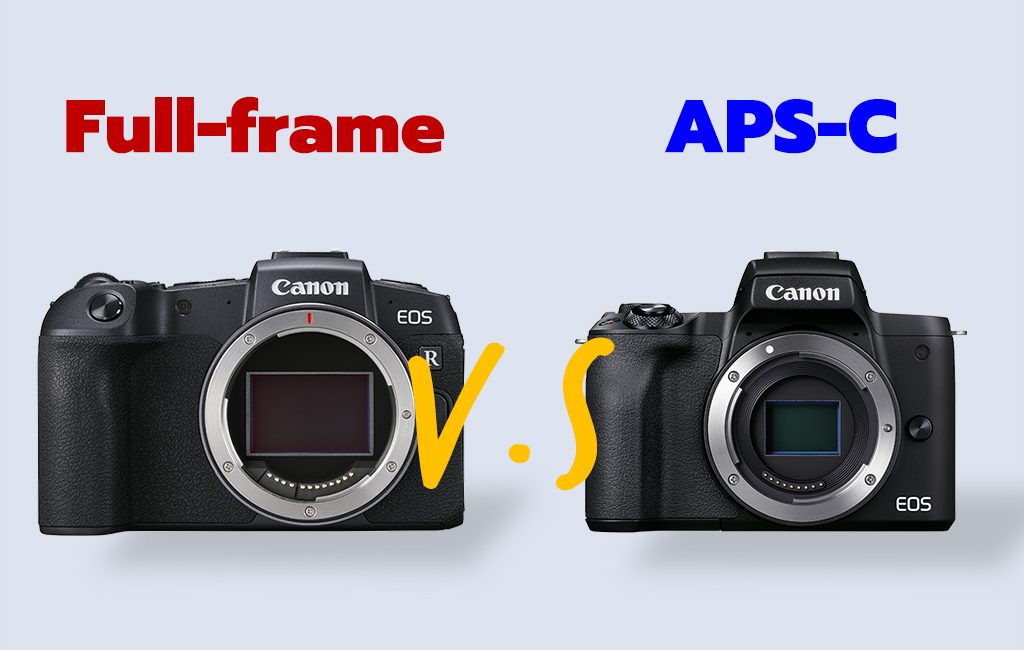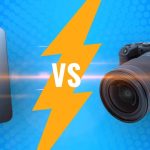In the world of digital cameras, one very hotly debated topic is APS-C vs full frame sensors. You have proponents of both sensor types swearing by the one they use, and you have people in the middle who have both.
But as someone looking into buying a camera, it’s important to understand the advantages and disadvantages of APS-C and full frame sensors. Yes, full frame does have disadvantages!
The interesting thing about cameras is that one size can fit all, and one size also doesn’t fit all. The answer to everything really is “it depends.”
So while we have a pretty difficult question to answer, we’ll try our best to lay out the facts in front of you. As you go through the post, make a note of what features are important and what you can live without.
In some cases, though, there is one particular difference that may be the clincher for many of us.
What are APS-C and Full Frame sensors, anyway?
APS-C and Full Frame both refer to the sensor, or the component in your camera that actually picks up the light coming in through the lens.
The sensor captures the light and the camera processes it and stores it as an image.
As you can guess, a larger sensor means the camera is capturing more light and more detail.
Full frame sensors are the largest sensors currently available. They’re called full frame because they’re the same size as a full frame of 35mm film. It measures 36 x 24 mm.
All other sensors are known as crop sensors, because they’re smaller than the standard 35mm sensor, and thus “cropped”.
APS-C gets its name from the APS film format, which was a little smaller than the regular 35mm film. APS stands for Advanced Photo System.
The C in APS-C stands for classic, and APS-C sensors measure 23.6 x 15.7mm.
While a full frame sensor is definitely going to capture more light and produce a better image, it’s not always a no-brainer to get a full-frame camera
APS-C vs Full Frame: Pros and Cons
Pixel size and image quality
An obvious advantage that full frame sensors have over APS-C sensors is pixel size. However, that’s not always the case!
Bigger sensors don’t always mean more pixel size. You can find out the size of the pixels by dividing the are of the sensor by the number of pixels.
Bigger pixels are able to capture more light and will result in an image with less noise.
One would assume that ISO performance will also be better by default with larger pixels, but funnily enough, that’s not always the case, either!
The image quality will definitely be better in full frame thanks to less noise, but you’ll be able to tell more in some situations vs others.
For example, full frame cameras do much better in low light than APS-C cameras do. But with adequate lighting, you really may not be able to tell the difference, especially for everyday use and typical prints.
The crop factor
Because APS-C sensors are smaller than full-frame sensors, you can actually get a boost in focal length if you use a lens made for a full-frame camera.
This is because the sensor is actually seeing less of the image than the lens is actually bringing in, so the image appears bigger.
Nikon and Sony use a crop factor of around 1.5, and Canon uses a crop factor of 1.6


Both images above credit: YouTube, Tom Richardson
So if you use a full-frame lens with a focal length of 70-300mm on an APS-C camera, you’re actually getting an effective focal length of 112-480mm.
The crop factor is very useful as a boost for telephoto lenses, but it works in reverse if you’re looking for a wide-angle shot.
If you wanted a wide angle lens and you bought a 10mm lens, you’d actually end up with a 16mm focal length.
Of course, all this only matters if you use a full-frame lens with your APS-C camera. If you use a lens designed to be used with an APS-C sensor, then the focal length written on the lens will be the same focal length you’ll actually get.
You can also use APS-C lenses on full-frame cameras. You just need to be careful of how you mount them because APS-C lenses sit more flush with the camera body and if you’re using a DSLR, that can damage the mirror mechanism.
If you use an APS-C lens on a full-frame camera, the lens will not be able to cover the entire sensor, so the border of the image will be blacked out. Some Nikon and Sony cameras have a crop mode which compensates for this.
If you’re using Canon lenses, EF lenses are full frame and EF-S lenses are APS-C.
Field of view and depth of field
You’ll get a smaller field of view with a crop sensor as opposed to a full frame sensor.
Additionally, full frame sensors have a shallower depth of field, which make them more advantageous for portrait photography and situations where you want to take full advantage of the bokeh effect.
Camera size
Since APS-C sensors are smaller than their full-frame counterparts, it follows that APS-C cameras are also much smaller and more compact than full-frame cameras.
For street photography and the like where you want to be as inconspicuous as possible and want something that does not take up too much space in a backpack, APS-C cameras can be a huge advantage over full frame sensor cameras.
Full frame cameras are generally much bigger in size thanks to the fact that the camera needs to house such a large sensor!
Lately there have been some compact full-frame cameras released, especially in the mirrorless line. These cameras are able to fit a lot of punch into a pretty small package.
Cost
As I mentioned at the start of the article, there is one factor above all else that may throw you one way in your decision, and that is cost.
Full frame cameras are significantly more expensive than their APS-C counterparts, which is why you’ll find most professionals opting for full frame sensor cameras.
Hobbyists, amateurs, and semi-professionals may opt to stick to APS-C mainly because of the cost factor. Not only are full frame cameras expensive, but full-frame lenses can be quite expensive too.
With APS-C, you can invest in a less expensive camera to start and then add full-frame lenses when your budget permits.
Do professional photographers use APS-C?
Many professionals are now opting to use APS-C cameras thanks to the huge advantages of lower cost, crop factor, and portability.
Can you use an APS C lens on a full frame?
Yes, you can, but you need to be careful. APS-C lenses sit closer to the camera body than full-frame lenses, so you may inadvertantly damage the mirror mechanism if you are not careful.
Sony and Nikon have a special crop mode where you can tell the camera to ignore the extra unused pixels.
Conclusion: Which is better APS C or full frame?
If you have the money and/or are a professional who needs the absolute best gear, then there is no reason you should not get a full-frame camera.
Full frame cameras do capture much better images overall and have much better low light perforance than cameras with crop sensors.
However, many professionals are now switching to crop APS-C sensors thanks to the smaller camera size and the fact that for many uses, even an APS-C sensor captures really good images.

